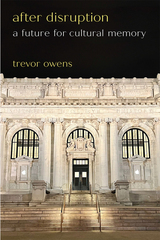976 start with L start with L


Foreword by Kirby McCurtis
With the help of this book’s adaptable storytime activities, tools for self-reflection, and discussion starters, children’s librarians will learn how to put anti-racism work into their professional practice while fostering an environment that celebrates all identities.As the weekly lists of best-sellers demonstrate, many people want to engage with racial issues. But when it comes to talking about race, they often don’t know how or are hesitant to take the first steps. This includes children's librarians, who are taking seriously our profession’s calls for diversity, equity, and inclusion. They already know that popular storytimes can be an effective way to increase community representation and belonging at the library. Incorporating race into storytimes is an ideal way to foster inclusion by normalizing conversations about these issues. This book will help public and school librarians face their own biases, showing them how to have honest discussions with children, their caregivers, and storytime attendees, as well as their colleagues. In this book, you will discover
- several ready-to-use library storytimes that incorporate racial themes, complete with sample activities and booklists;
- an anti-oppression framework, based on the author’s own real-world practice, that is customizable for different settings and situations;
- concrete suggestions for overcoming fears and awkwardness when it comes to talking about race, with advice on practicing new language, making space to connect around appropriate cultural books for read alouds, and evaluating books for storytime;
- interactive self-reflecting worksheets which explore planning picture book introductions and songs for inclusive storytimes, providing age-appropriate glimpses into history, and suggested affirmations in describing skin tone, hair, and language;
- advocacy talking points centered on social justice that will encourage discussion with co-workers and other library staff; and
- guidance on community engagement, relationship building, and intentionally trying to diversify your world in order to truly become an anti-bias practitioner.

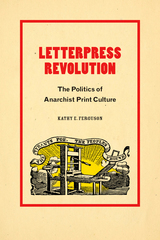


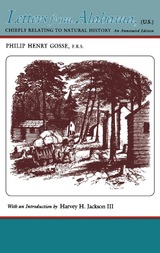
Philip Henry Gosse (1810-1888), a British naturalist, left home at age 17 and made his way to Alabama in 1838, where he had heard educated people were in demand. He was employed by Judge Reuben Saffold at Pleasant Hill in Dallas County as a teacher for about a dozen children of local landowners, but his principal interest was natural history. During the eight months he lived in th Black Belt he watched, listened, thought, took notes, and made sketches--activities that eventually led to Letters from Alabama. He lived among Alabamians, talked and listened to them, saw them at their best and their worst, and came to understand their hopes and fears. They were a part of the natural world, and he paid attention to them as any good scientist would. With the skills of a scientist and the temperament of an artist, Gosse set down an account of natural life in frontier Alabama that has no equal. Written to no one in particular, a common literary device of the period, the letters were first published in a magazine, and in 1859 appeared as a book. By that time Gosse was an established scholar and one of England’s most noted scientific illustrators.
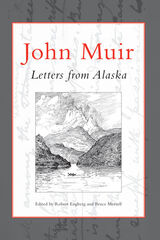
John Muir (1838–1914), founder of the Sierra Club, was one of the most famous and influential environmental conservationists of all time. From 1879 to 1880 Muir traveled the waters of southeastern Alaska in a Tlingit Indian dugout canoe and reported his encounters in a series of letters published in the San Francisco Daily Evening Bulletin. Collected here are Muir’s original letters, bearing the immediacy and candor of his best work and providing a rare account of southeastern Alaska history, alongside breathtaking observations of glaciers and the untamed landscape. Through Muir we encounter gold miners, rogue towns, Taku Inlet, Glacier Bay, profiles of Tlingit Indians, and the infancy of the tourist industry. This collection of work by one of America’s foremost naturalists provides a magnificent look into early conservationist thought and one individual’s encounter with nature.

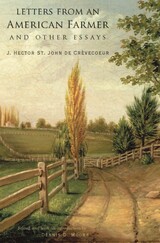
Letters from an American Farmer was published in London in 1782, just as the idea of an “American” was becoming a reality. Those epistolary essays introduced the European public to America’s landscape and customs and have since served as the iconic description of a then-new people. Dennis D. Moore’s convenient, up-to-date reader’s edition situates those twelve pieces from the 1782 Letters in the context of thirteen other essays representative of Crèvecoeur’s writings in English.
The “American Farmer” of the title is Crèvecoeur’s fictional persona Farmer James, a bumpkin from rural Pennsylvania. In his Introduction to this edition, Moore places this self-effacing pose in perspective and charts Crèvecoeur’s enterprising approach to self-promotion, which involved repackaging and adapting his writings for French and English audiences.
Born in Normandy, Crèvecoeur came to New York in the 1750s by way of England and then Canada, traveled throughout the colonies as a surveyor and trader, and was naturalized in 1765. The pieces he included in the 1782 Letters map a shift from hopefulness to disillusionment: its opening selections offer America as a utopian haven from European restrictions on personal liberty and material advancement but give way to portrayals of a land plagued by the horrors of slavery, the threat of Indian raids, and revolutionary unrest. This new edition opens up a broader perspective on this artful, ambitious writer and cosmopolitan thinker who coined America’s most enduring metaphor: a place where “individuals of all nations are melted into a new race of men.”

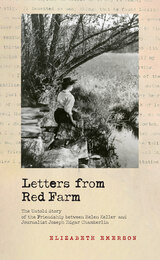
Informed by previously unpublished letters and extensive research, Letters from Red Farm explores for the first time Keller's deep and enduring friendship with the man who became her literary mentor and friend for over forty years. Written by Chamberlin's great-great granddaughter, this engaging story imparts new insights into Keller's life and personality, introduces the irresistible Chamberlin to a modern public, and follows Keller's burgeoning interest in social activism, as she took up the causes of disability rights, women's issues, and pacifism.
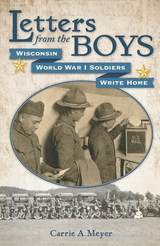
On the 100th anniversary of the arrival of the flood of American troops in Europe that would shift the tide of World War I in favor of the Allies, Letters from the Boys brings to life this terrible war as experienced by Wisconsinites writing home.
Technology had transformed the battlefield in alarming ways. Automatic rifles mowed down the young men who went “over the top” to attack enemy trenches; airplanes and improved artillery brought death unseen from miles away; terrifying clouds of poison gas choked and burned the European countryside; the internal combustion engine brought tanks to the battlefield for the first time and revolutionized the way troops deployed.
In the thick of it were young men from Wisconsin who found themselves caught up in geopolitical events half a world away. Professor Carrie A. Meyer combed through three newspapers in Green County, Wisconsin, to collect and synthesize the letters from the boys into a narrative that is both unique and representative, telling the stories of several Green County boys and what they saw, from preparing for war, to life among French families near the front, to the terror of the battlefield. Meyer gracefully removes the veil of obscurity and anonymity hanging over soldiers who participated in a war fought so long ago by great numbers of men, reminding us that armies are made of individuals who strove to do their part and then return to their families.
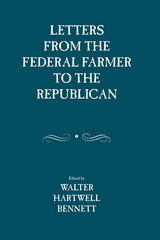
The Federal Farmer’s letters were written in opposition to the Constitution in the form in which it had come from the Federal Convention of 1787. Their immediate objective was to secure amendments to the Constitution before it was ratified by state convention. But the letters are valuable also for the basic political philosophy that they represent, specifically, the political philosophy of the revolution and the Bill of Rights. This philosophy stresses principles of federalism and republicanism and exemplifies the liberal idealism that took root in America during the Revolutionary War era.
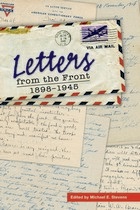
This volume tells the stories of 62 men and women from Wisconsin who served in the Spanish-American War, World War I, and World War II. Letters from the Front is a vivid social history of wartime as told by those who took part in these foreign conflicts. Most of them are "ordinary" people, uprooted from farms, factories, and offices, who took part in extraordinary events. This work explores how war changed their lives and reveals the emotions they felt in uniform, in remote outposts, in combat, and in prison camps. These letters, diaries, oral histories, newspapers, and contemporary accounts provide a history of adaptation to military life; they also reflect the changes that occurred over the half-century encompassing these confilcts, an era of great technological innovation — and one in which America's vision of itself also changed.
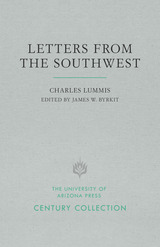
In the fall of 1884, journalist Charles Lummis set out on foot from Ohio to California on assignment for the Los Angeles Times. The reports he mailed ahead to that newspaper were later refashioned for the book A Tramp Across the Continent, a work that helped to establish Lummis as the most active promoter of Southwestern culture who ever lived.
Lummis wrote another set of letters during his journey, however, which he sent back to Ohio for publication by the Chillicothe Leader. Although these letters contain basically the same narrative as those sent to Los Angeles and later found in A Tramp, the Ohio letters more closely reflect the author’s thoughts and observations while on the journey. In fact, a comparison of the two drafts indicates that Lummis spent considerable effort removing spontaneous details from the Ohio letters in favor or a more commercial, self-promoting, and politic reporting for the California paper.
The twenty-four Ohio letters, assembled here by James W. Byrkit, offer a far more candid look at the Southwest than Lummis was later to bring to print, as well as greater insight into the author’s own personality. Byrkit’s introductory essay provides the background for Lummis’s career, compares the three bodies of work relating to the trek, and offers an account of Lummis’s transformation from chronicler to promoter.
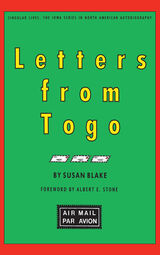
With her delightful prose and insight for detail Blake introduces us to Mahouna, her housekeeper, who runs a cold drink business from his refrigerator in a country where electricity is unreliable; to American Lee Ann and her Togolese family, who works at the American school to earn the fees for a private education for her children; and to the suave René, wearing silk shirts and a most seductive smile, who teeters on the edge of the Togolese and expatriate worlds.
Since Lomé is both an overgrown village and a cosmopolitan city, Blake's exhilarating, often humorous experiences range from buying a car to attending a traditional tom-tom funeral, from visiting people who hunt with bows and arrows to enduring faculty meetings, from negotiating the politics of buying produce to lecturing on Afro-American literature at the English Club. Together, her enlivening letters trace the pattern of adjusting to a foreign environment and probe the connections between Africa and this curious, energetic American. Not "out of Africa" but within it, they take advantage of time and perspective to penetrate the universal experience of being a stranger in a strange land.
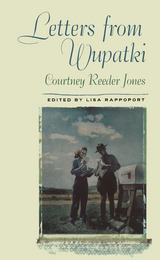
The year was 1938, and the newlyweds had come to Wupatki National Monument as full-time National Park Service caretakers for the ruin. Remote in time and place, their story as described in Courtney's letters will take readers into a dramatic landscape of red rocks, purple volcanoes, and endless blue sky. Here, some 60 years ago, two young people came to terms with their new life together and with their nearly total reliance upon each other and their Navajo neighbors.
"They helped us in any way that a neighbor would, and we helped them as we could," wrote Courtney in her memoirs years later. Vivid and engaging, her letters home spill over with descriptions of their friendship with local Navajo families, their sings and celebrations, and her good luck in being able to be a part of it all.
Letters from Wupatki captures a more innocent era in southwestern archaeology and the history of the National Park Service before the post-war years brought paved roads, expanded park facilities, and ever-increasing crowds of visitors. Courtney's letters to her family and friends reflect all the charm of the earlier time as they convey the sense of rapid transition that came after the war.
Tracking those changes in the development of Wupatki National Monument and the National Park Service, the letters also—and perhaps more important—reveal changes in the Joneses themselves. Of particular interest to anthropologists and historians, their story also gives the general reader captivating glimpses of a partnership between two people who only grew stronger for the struggles they shared together.
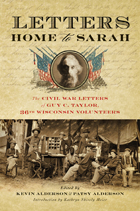
From the initial mustering and training of his regiment at Camp Randall in Wisconsin, through the siege of Petersburg in Virginia, General Lee’s surrender at Appomattox, and the postwar Grand Review of the Armies parade in Washington, D.C., Taylor conveys in vivid detail his own experiences and emotions and shows himself a keen observer of all that is passing around him. While at war, he contracts measles, pneumonia, and malaria, and he writes about the hospitals, treatments, and sanitary conditions that he and his comrades endured during the war. Amidst the descriptions of soldiering, Taylor’s letters to Sarah are threaded with the concerns of a young married couple separated by war but still coping together with childrearing and financial matters. The letters show, too, Taylor’s transformation from a lonely and somewhat disgruntled infantryman to a thoughtful commentator on the greater ideals of the war.
This remarkable trove of letters, which had been left in the attic of Taylor’s former home in Cashton, Wisconsin, was discovered by local historian Kevin Alderson at a household auction. Recognizing them for the treasure they are, Alderson bought the letters and, aided by his wife Patsy, painstakingly transcribed the letters and researched Taylor’s story in Wisconsin and at historical sites of the Civil War. The Aldersons’ preface and notes are augmented by an introduction by Civil War historian Kathryn Shively Meier, and the book includes photographs, maps, and illustrations related to Guy Taylor’s life and letters.
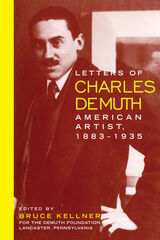
This collection of 155 of his letters offers valuable views of the arts and letters colonies in Provincetown, New York, and Paris. Besides offering information on Demuth's own works, the letters also shed light on the output of his contemporaries, as well as references to their trips, liaisons, and idiosyncrasies. Demuth numbered among his correspondents some of the most famous artists and writers of his time, including Georgia O'Keeffe, Eugene O'Neill, John Reed, Gertrude Stein, Alfred Stieglitz, Carl Van Vechten, and William Carlos Willliams. In his travels in the United States and abroad, he encountered many other talented contemporaries: Peggy Bacon, Muriel Draper, Marcel Duchamp, the Stetthemer sisters, artists and writers, patrons, and gallery owners.
Whether he is offering to pick up a copy of Joyce's Ulysses for Eugene O'Neill or trying to convince Georgia O'Keeffe to decorate his music room ("just allow that red and yellow 'canna' one to spread until it fills the room"), Demuth is always in the thick of art and literary life. Flamboyant in attire but discreet in his homosexuality, Demuth also reveals in his letters the life of a talented homosexual in the teens and twenties. With his best friends Robert Locher and Marsden Hartley, he circulated through the art colonies of Greenwich Village, Provincetown, and Paris, meeting everyone.
The book also contains reprints of some short appraisals of Demuth and his work that were published during his lifetime, long out of print, including pieces by A. E. Gallatin, Angela E. Hagen, Marsden Hartley, Helen Henderson, Henry McBride, Carl Van Vechten, Rita Wells, and Willard Huntington Wright.
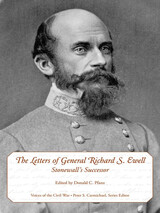
Richard S. Ewell was one of only six lieutenant generals to serve in Lee’s Army of Northern Virginia, and of those he was but one of two—the other being Stonewall Jackson, his predecessor as commander of the Second Corps—to have left behind a sizable body of correspondence. Forty-nine of Ewell’s letters were published in 1939. This new volume, drawing on more recently available material and scrupulously annotated by Ewell biographer Donald Pfanz, offers a much larger collection of the general’s missives: 173 personal letters, 7 official letters, 4 battle narratives, and 2 memoranda of incidents that took place during the Civil War.
The book covers the full range of Ewell’s career: his days at West Point, his posting on the western frontier, his role in the Mexican War, his Civil War service, and, finally, his postwar years managing farms in Tennessee and Mississippi. Some historians have judged Ewell harshly, particularly for his failure to capture Cemetery Hill on the first day at Gettysburg, but Pfanz contends that Ewell was in fact a brilliant combat general whose overall record, which included victories at the battles of Cross Keys, Second Winchester, and Fort Harrison, was one of which any commanding officer could be proud. Although irritable and often critical of others, Ewell’s correspondence shows him to have been generous toward subordinates, modest regarding his own accomplishments, and upright in both his professional and personal relationships. His letters to family and friends are a mixture of wry humor and uncommon sense. No one who reads them will view this important general in quite the same way again.
DONALD C. PFANZ is the author of Richard S. Ewell: A Soldier’s Life, Abraham Lincoln at City Point, and War So Terrible: A Popular History of the Battle of Fredericksburg.

Henry Adams’s letters are one of the vital chronicles of the life of the mind in America. A perceptive analyst of people, events, and ideas, Adams recorded, with brilliance and wit, sixty years of enormous change at home and abroad.
Volume I shows him growing from a high-spirited but self-conscious 20-year-old to a self-assured man of the world. In Washington in the chaotic months before Lincoln’s inauguration, then in London during the war years and beyond, he serves as secretary to his statesman father and is privy to the inner workings of politics and diplomacy. English social life proves as absorbing as affairs of state.
Volume II takes him from his years as a crusading journalist in Grant’s Washington, through his marriage to Clover Hooper and his pioneer work as a history professor at Harvard and editor of the North American Review, to his settling in Washington as a professional historian. There he and his wife, described by Henry James as “one of the two most interesting women in America,” establish the first intellectual salon of the capital. This halcyon period comes to a catastrophic close with Clover’s suicide.
Volume III traces his gradual recovery from the shock of his wife’s death as he seeks distraction in travel—to Japan, to Cuba, and in 1891–92 to the South Seas—a recovery complicated by his falling dangerously in love with Elizabeth Cameron, beautiful young wife of a leading senator. His South Seas letters to Mrs. Cameron are the most brilliant of all.
Fewer than half of Adams’s letters have been published even in part, and earlier collections have been marred by expurgations, mistranscriptions, and editorial deletions. In the six volumes of this definitive edition, readers will have access to a major document of the American past.

Henry Adams’s letters are among the best in the language. They are, in Alfred Kazin’s words, “magnificent, his most spontaneous and freest literary works.” With the completion of this edition, they may well be judged his most significant achievement. “The letters are not a gloss on a life’s work; in a real sense they are his life’s work,” the reviewer for American Literature stated.
We encounter Adams in 1892 at a turning point in his career, at the beginning of the period in which his leading ideas would be crystallized and his major literary works take shape. He had survived the shock of his wife’s suicide and had completed his great History of the Jefferson era, and after his long journey in the South Seas his frustrated passion for Elizabeth Cameron had begun to calm. His wanderlust now took him to the Carolinas and the Rockies, to Mexico, Cuba, Egypt, the Near East, Greece, Italy, central Europe, Russia, and the North Cape. His interest came increasingly to center on the geopolitical present and the medieval past. Prompted by the Panic of 1893, he began an intensive study of the new finance capitalism and the imperial power it created; by the end of the decade he was beginning to foresee the shift of global dominance from Britain to the United States and Russia. Meanwhile a tour of the churches and abbeys of Normandy fired his imagination and led to the absorption in the art and culture of medieval France that would bear fruit in Mont-Saint-Michel and Chartres.
At his home on Lafayette Square, across from the White House, he became an informal adviser to statesmen, John Hay and Theodore Roosevelt among them. Out of his friendly association with scientists and his own study of science came his conviction that the dynamo and radium were bringing a revolution in physics. His germinating ideas about science, technology, and economic power were conveyed in his letters over many years before they were formulated into The Education of Henry Adams, his “Study of Twentieth-Century Multiplicity.”
The Adams who emerges from the letters is far more complex, contradictory, and human than the protagonist of the Education. He writes to women, Mrs. Cameron above all, about politics, economics, and science as well as social news and palace gossip, just as he writes to men about art as well as power. The multiplicity of his interests, his sharp perceptions, eye for telling detail, and passion for generalization, together with his irony and wit, make his letters the engrossing record of an extraordinary life-in-progress and an incomparable commentary upon his age.

Henry Adams’s letters are among the best in the language. They are, in Alfred Kazin’s words, “magnificent, his most spontaneous and freest literary works.” With the completion of this edition, they may well be judged his most significant achievement. “The letters are not a gloss on a life’s work; in a real sense they are his life’s work,” the reviewer for American Literature stated.
We encounter Adams in 1892 at a turning point in his career, at the beginning of the period in which his leading ideas would be crystallized and his major literary works take shape. He had survived the shock of his wife’s suicide and had completed his great History of the Jefferson era, and after his long journey in the South Seas his frustrated passion for Elizabeth Cameron had begun to calm. His wanderlust now took him to the Carolinas and the Rockies, to Mexico, Cuba, Egypt, the Near East, Greece, Italy, central Europe, Russia, and the North Cape. His interest came increasingly to center on the geopolitical present and the medieval past. Prompted by the Panic of 1893, he began an intensive study of the new finance capitalism and the imperial power it created; by the end of the decade he was beginning to foresee the shift of global dominance from Britain to the United States and Russia. Meanwhile a tour of the churches and abbeys of Normandy fired his imagination and led to the absorption in the art and culture of medieval France that would bear fruit in Mont-Saint-Michel and Chartres.
At his home on Lafayette Square, across from the White House, he became an informal adviser to statesmen, John Hay and Theodore Roosevelt among them. Out of his friendly association with scientists and his own study of science came his conviction that the dynamo and radium were bringing a revolution in physics. His germinating ideas about science, technology, and economic power were conveyed in his letters over many years before they were formulated into The Education of Henry Adams, his “Study of Twentieth-Century Multiplicity.”
The Adams who emerges from the letters is far more complex, contradictory, and human than the protagonist of the Education. He writes to women, Mrs. Cameron above all, about politics, economics, and science as well as social news and palace gossip, just as he writes to men about art as well as power. The multiplicity of his interests, his sharp perceptions, eye for telling detail, and passion for generalization, together with his irony and wit, make his letters the engrossing record of an extraordinary life-in-progress and an incomparable commentary upon his age.

Henry Adams’s letters are among the best in the language. They are, in Alfred Kazin’s words, “magnificent, his most spontaneous and freest literary works.” With the completion of this edition, they may well be judged his most significant achievement. “The letters are not a gloss on a life’s work; in a real sense they are his life’s work,” the reviewer for American Literature stated.
We encounter Adams in 1892 at a turning point in his career, at the beginning of the period in which his leading ideas would be crystallized and his major literary works take shape. He had survived the shock of his wife’s suicide and had completed his great History of the Jefferson era, and after his long journey in the South Seas his frustrated passion for Elizabeth Cameron had begun to calm. His wanderlust now took him to the Carolinas and the Rockies, to Mexico, Cuba, Egypt, the Near East, Greece, Italy, central Europe, Russia, and the North Cape. His interest came increasingly to center on the geopolitical present and the medieval past. Prompted by the Panic of 1893, he began an intensive study of the new finance capitalism and the imperial power it created; by the end of the decade he was beginning to foresee the shift of global dominance from Britain to the United States and Russia. Meanwhile a tour of the churches and abbeys of Normandy fired his imagination and led to the absorption in the art and culture of medieval France that would bear fruit in Mont-Saint-Michel and Chartres.
At his home on Lafayette Square, across from the White House, he became an informal adviser to statesmen, John Hay and Theodore Roosevelt among them. Out of his friendly association with scientists and his own study of science came his conviction that the dynamo and radium were bringing a revolution in physics. His germinating ideas about science, technology, and economic power were conveyed in his letters over many years before they were formulated into The Education of Henry Adams, his “Study of Twentieth-Century Multiplicity.”
The Adams who emerges from the letters is far more complex, contradictory, and human than the protagonist of the Education. He writes to women, Mrs. Cameron above all, about politics, economics, and science as well as social news and palace gossip, just as he writes to men about art as well as power. The multiplicity of his interests, his sharp perceptions, eye for telling detail, and passion for generalization, together with his irony and wit, make his letters the engrossing record of an extraordinary life-in-progress and an incomparable commentary upon his age.

Henry Adams’s letters are among the best in the language. They are, in Alfred Kazin’s words, “magnificent, his most spontaneous and freest literary works.” With the completion of this edition, they may well be judged his most significant achievement. “The letters are not a gloss on a life’s work; in a real sense they are his life’s work,” the reviewer for American Literature stated.
We encounter Adams in 1892 at a turning point in his career, at the beginning of the period in which his leading ideas would be crystallized and his major literary works take shape. He had survived the shock of his wife’s suicide and had completed his great History of the Jefferson era, and after his long journey in the South Seas his frustrated passion for Elizabeth Cameron had begun to calm. His wanderlust now took him to the Carolinas and the Rockies, to Mexico, Cuba, Egypt, the Near East, Greece, Italy, central Europe, Russia, and the North Cape. His interest came increasingly to center on the geopolitical present and the medieval past. Prompted by the Panic of 1893, he began an intensive study of the new finance capitalism and the imperial power it created; by the end of the decade he was beginning to foresee the shift of global dominance from Britain to the United States and Russia. Meanwhile a tour of the churches and abbeys of Normandy fired his imagination and led to the absorption in the art and culture of medieval France that would bear fruit in Mont-Saint-Michel and Chartres.
At his home on Lafayette Square, across from the White House, he became an informal adviser to statesmen, John Hay and Theodore Roosevelt among them. Out of his friendly association with scientists and his own study of science came his conviction that the dynamo and radium were bringing a revolution in physics. His germinating ideas about science, technology, and economic power were conveyed in his letters over many years before they were formulated into The Education of Henry Adams, his “Study of Twentieth-Century Multiplicity.”
The Adams who emerges from the letters is far more complex, contradictory, and human than the protagonist of the Education. He writes to women, Mrs. Cameron above all, about politics, economics, and science as well as social news and palace gossip, just as he writes to men about art as well as power. The multiplicity of his interests, his sharp perceptions, eye for telling detail, and passion for generalization, together with his irony and wit, make his letters the engrossing record of an extraordinary life-in-progress and an incomparable commentary upon his age.

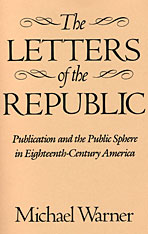

The Letters of Theodore Roosevelt constitute a major contribution to the field of American history and literature. At the same time, they present an autobiography of matchless candor and vitality. They are at once a mine of information for the historian, a case study in astute and vigorous political leadership, and a delight to the general reader. All the letters needed to reveal Roosevelt's thought and action in his public and private life are included, with appropriate editorial comment; and each is printed in its entirety.
With the addition of this final installment, about 6,000 letters will have been published out of the 100,000 which Theodore Roosevelt wrote between 1868 (when he was 10) and the day of his death in January, 1919. During the last ten years of his life Roosevelt plunged into the African jungle; he visited Kaiser Wilhelm II; he led the Progressive Movement, and as a Bull Moose was defeated in 1912—permitting Woodrow Wilson to defeat William Howard Taft for the Presidency. Then, explorer once again, he escaped with his life from the wilds of Brazil, campaigned for United States' participation in World War One, and died peacefully as his cousin was on the threshold of a dynamic career.
Theodore Roosevelt's letters are a treasury of information about the issues, the people, and the temper of his period. Here are available documents which tell of his thought and action in all the major and many of the minor undertakings of his public and private life. Each letter is printed in its entirety. Both in content and presentation, The Letters of Theodore Roosevelt constitute a contribution to the field of American history and literature whose value can hardly be exaggerated. At the same time they present an autobiography of matchless candor and vitality.

The Letters of Theodore Roosevelt constitute a major contribution to the field of American history and literature. At the same time, they present an autobiography of matchless candor and vitality. They are at once a mine of information for the historian, a case study in astute and vigorous political leadership, and a delight to the general reader. All the letters needed to reveal Roosevelt's thought and action in his public and private life are included, with appropriate editorial comment; and each is printed in its entirety.
With the addition of this final installment, about 6,000 letters will have been published out of the 100,000 which Theodore Roosevelt wrote between 1868 (when he was 10) and the day of his death in January, 1919. During the last ten years of his life Roosevelt plunged into the African jungle; he visited Kaiser Wilhelm II; he led the Progressive Movement, and as a Bull Moose was defeated in 1912—permitting Woodrow Wilson to defeat William Howard Taft for the Presidency. Then, explorer once again, he escaped with his life from the wilds of Brazil, campaigned for United States' participation in World War One, and died peacefully as his cousin was on the threshold of a dynamic career.
Theodore Roosevelt's letters are a treasury of information about the issues, the people, and the temper of his period. Here are available documents which tell of his thought and action in all the major and many of the minor undertakings of his public and private life. Each letter is printed in its entirety. Both in content and presentation, The Letters of Theodore Roosevelt constitute a contribution to the field of American history and literature whose value can hardly be exaggerated. At the same time they present an autobiography of matchless candor and vitality.

The Letters of Theodore Roosevelt constitute a major contribution to the field of American history and literature. At the same time, they present an autobiography of matchless candor and vitality. They are at once a mine of information for the historian, a case study in astute and vigorous political leadership, and a delight to the general reader. All the letters needed to reveal Roosevelt's thought and action in his public and private life are included, with appropriate editorial comment; and each is printed in its entirety.
In the letters of 1905–1909, Roosevelt’s “big stick” carries increasing weight at home and abroad. These are the years of the fleet’s cruise around the world, of trust-busting and railroad regulation and currency control, and the building of the Panama Canal. They include the Panic of 1907, “Nature Faking,” conservation, the choice of a successor, and the bitter conflict between President and Congress in the closing days of the administration.

The Letters of Theodore Roosevelt constitute a major contribution to the field of American history and literature. At the same time, they present an autobiography of matchless candor and vitality. They are at once a mine of information for the historian, a case study in astute and vigorous political leadership, and a delight to the general reader. All the letters needed to reveal Roosevelt's thought and action in his public and private life are included, with appropriate editorial comment; and each is printed in its entirety.
In the letters of 1905–1909, Roosevelt’s “big stick” carries increasing weight at home and abroad. These are the years of the fleet’s cruise around the world, of trust-busting and railroad regulation and currency control, and the building of the Panama Canal. They include the Panic of 1907, “Nature Faking,” conservation, the choice of a successor, and the bitter conflict between President and Congress in the closing days of the administration.


The Letters of Theodore Roosevelt constitute a major contribution to the field of American history and literature. At the same time, they present an autobiography of matchless candor and vitality. They are at once a mine of information for the historian, a case study in astute and vigorous political leadership, and a delight to the general reader. All the letters needed to reveal Roosevelt's thought and action in his public and private life are included, with appropriate editorial comment; and each is printed in its entirety.
In the letters of 1901–1905, Roosevelt consolidates his position as President and party leader, settles the coal strike, deals with the politics of the Panama Canal, expands the Navy, extends the sphere of American interests abroad, achieves the Presidency in his own right, and works with the Russians and the Japanese to make the Peace in Portsmouth.


The Letters of Theodore Roosevelt constitute a major contribution to the field of American history and literature. At the same time, they present an autobiography of matchless candor and vitality. They are at once a mine of information for the historian, a case study in astute and vigorous political leadership, and a delight to the general reader. All the letters needed to reveal Roosevelt's thought and action in his public and private life are included, with appropriate editorial comment; and each is printed in its entirety.
In the letters of 1901–1905, Roosevelt consolidates his position as President and party leader, settles the coal strike, deals with the politics of the Panama Canal, expands the Navy, extends the sphere of American interests abroad, achieves the Presidency in his own right, and works with the Russians and the Japanese to make the Peace in Portsmouth.

William Lloyd Garrison (1805-1879), outstanding among the dedicated fighters for the abolition of slavery, was also an activist in other movements such as women's and civil rights and religious reform. Never tiring in battle, he was "irrepressible, uncompromising, and inflammatory." He antagonized many, including some of his fellow reformers. There were also many who loved and respected him. But he was never overlooked.
His letters, a source of the first magnitude, begin in 1822, when Garrison was seventeen, and end in 1879, the year of his death. They offer an insight into the mind and life of an outstanding figure in American history, a reformer-revolutionary who sought radical changes in the institutions of his day--in the relationship of the races, the rights of women, the nature and role of religion and religious institutions, and the relations between the state and its citizens; and who, perhaps more than any other single individual, was ultimately responsible for the emancipation of the slaves.
Garrison's letters are also, sui generis, important as the expression of a vigorous writer, whose letters reflect his strength of character and warm humanity, and who appears here not only as the journalist, the reformer, and the leader of men, but also as the loving husband and father, the devoted son and son-in-law, the staunch friend, and the formidable opponent.
Included in this well illustrated first volume are Garrison's letters from the earliest known--one to his mother during his apprenticeship--through the 1831 founding of his famous newspaper, The Liberator; the founding in 1832 and 1833 of the New England and the American Anti-Slavery Societies; his first trip to England to meet with British abolitionists; his courtship and marriage; and his being dragged through the streets of Boston by a mob out to tar and feather the British abolitionist George Thompson.

This is the sixth and final volume collecting the letters of an outstanding figure in American history. During the years when these letters were written, Garrison was secure, both financially and in his reputation as distinguished abolitionist. Although officially retired, he remained vigorously concerned with issues crucial to him--the relationship of the races, woman suffrage, temperance, national and international affairs, and, above all, his family.
He writes about the Alabama Claims and the proposed annexation of Santo Domingo, aligning himself with the Radical Republicans. His letters support President Grant, despite the charges of corruption that surrounded him, but his public views on Rutherford B. Hayes change from cautious optimism to condemnation. He is saddened by the return to power in the South of the white ruling class, and to the end of his life he is deeply involved with the plight of minority groups in the country.
The center of Garrison's life was his family, and his correspondence reveals the ways his days passed in association with those nearest to him. There is evidence of friction in the family, but his relationships are warm and loving. His private letters tell of the death of his wife in 1875 and his failing health. He died in 1879, an old reformer still fighting for the rights of humanity.

By 1861, William Lloyd Garrison’s public image had progressed from that of impulsive fanatic to one of widely respected and influential abolitionist. As editor of The Liberator and president of the American Anti-Slavery Society, he was the acknowledged spokesman for radical antislavery opinion.
Garrison was profoundly disturbed by the advent of war. In his correspondence, he kept military events at a distance, focusing on the morality of the conflict, an issue made the more poignant by his eldest son’s enlistment in the 55th Massachusetts Regiment in 1863—the same year that his wife suffered a paralytic stroke. Gradually he became convinced that the war would effect the abolition he had sought for so many years.
Likewise his attitude toward Lincoln underwent significant changes; he moved from critic to supporter, defending the President’s re-election against the arguments of fellow abolitionists. His visit with Lincoln in the White House he described as “a very satisfactory one indeed,” for he was pleased with Lincoln’s “spirit, and the familiar and candid way in which he unbosomed himself.” With the war ended and his goal as abolitionist achieved, Garrison discontinued The Liberator and withdrew from the American Anti-Slavery Society. Fortunately, friends arranged for a national testimonial that provided financial security. By 1866–1867 he was enjoying an active retirement with honors at home and abroad, and a “plump and cunning” first grandchild. His letters show Garrison as a family man and curious observer as well as a reformer with a vision of a free and peaceful land.

The fiery editor of the Liberator helped shape the destiny of a divided nation rapidly moving toward war. His letters ring with denunciations of the Compromise of 1850 and the barbarous Fugitive Slave Law, a federal bill that not only sent runaway slaves back to angry masters but threatened the liberty of all free blacks. Despite such provocation. Garrison was an advocate of nonresistance during this period though he continued to advocate the emancipation of slaves.
Garrison's writings also reflect the interests of his times. He engaged in lively correspondence with fellow countrymen Harriet Beecher Stowe, Wendell Phillips, Susan B. Anthony, Theodore Parker, and Stephen S. Foster. In a long letter to Louis Kossuth, he challenges that Hungarian patriot's stand of opposing tyranny in Europe while ignoring slavery in America.
Set against a background of wide-ranging travels throughout the western United States and of family affairs back home in Boston, Garrison's letters of this decade make a distinctive contribution to antebellum life and thought.


William Lloyd Garrison (1805-1879), outstanding among the dedicated fighters for the abolition of slavery, was also an activist in other movements such as women's and civil rights and religious reform. Never tiring in battle, he was "irrepressible, uncompromising, and inflammatory." He antagonized many, including some of his fellow reformers. There were also many who loved and respected him. But he was never overlooked.
His letters, a source of the first magnitude, begin in 1822, when Garrison was seventeen, and end in 1879, the year of his death. They offer an insight into the mind and life of an outstanding figure in American history, a reformer-revolutionary who sought radical changes in the institutions of his day--in the relationship of the races, the rights of women, the nature and role of religion and religious institutions, and the relations between the state and its citizens; and who, perhaps more than any other single individual, was ultimately responsible for the emancipation of the slaves.
Garrison's letters are also, sui generis, important as the expression of a vigorous writer, whose letters reflect his strength of character and warm humanity, and who appears here not only as the journalist, the reformer, and the leader of men, but also as the loving husband and father, the devoted son and son-in-law, the staunch friend, and the formidable opponent.
During the five years covered in this volume Garrison's three sons were born and he entered the arena of social reform with full force. In 1836 he began his public criticism of the orthodox observance of the Sabbath. The year 1837 witnessed the severe attack from orthodox clergyman on The Liberator. In 1838 Garrison attended the Peace Convention in Boston. The simmering conflict within the antislavery movement over the issues of political action and the participation of women broke out in 1839, and at the annual meeting of the American Anti-Slavery Society in 1840, the anti-Garrisonian minority seceded and formed the American and Foreign Anti-Slavery Society. Meanwhile the World's Anti-Slavery Convention was called in London in June. Garrison attended, arriving several days after the opening. The female delegates from Massachusetts and Pennsylvania were excluded from the convention, and Garrison protested by sitting in the balcony with them and refusing to participate.
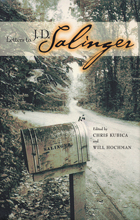
Salinger continues to maintain his silence, but Holden Caulfield, Franny and Zooey, and Seymour Glass—the unforgettable characters of his novel and short stories—continue to speak to generations of readers and writers. Letters to Salinger includes more than 150 personal letters addressed to Salinger from well-known writers, editors, critics, journalists, and other luminaries, as well as from students, teachers, and readers around the world, some of whom have just discovered Salinger for the first time. Their voices testify to the lasting impressions Salinger’s ideas and emotions have made on so many diverse lives.
Contributors include Marvin Bell, Frederick Busch, Stephen Collins, Nicholas Delbanco, Warren French, Herbert Gold, W. P. Kinsella, Molly McQuade, Stewart O’Nan, Robert O’Connor, Ellis Paul, Molly Peacock, Sanford Pinsker, George Plimpton, Gerald Rosen, Sid Salinger, David Shields, Joseph Skibell, Melanie Rae Thon, Alma Luz Villanueva, Katharine Weber, and many others

A unique document in the history of the Kennedy years, these letters give us a firsthand look at the working relationship between a president and one of his close advisers, John Kenneth Galbraith. In an early letter, Galbraith mentions his "ambition to be the most reticent adviser in modern political history." But as a respected intellectual and author of the celebrated The Affluent Society, he was not to be positioned so lightly, and his letters are replete with valuable advice about economics, public policy, and the federal bureaucracy. As the United States' ambassador to India from 1961 to 1963, Galbraith made use of his position to counsel the President on foreign policy, especially as it bore on the Asian subcontinent and, ultimately, Vietnam.
Written with verve and wit, his letters were relished by a president who had little patience for foolish ideas or bad prose. They stand out today as a vibrant chronicle of some of the most subtle and critical moments in the days of the Kennedy administration--and a fascinating record of the counsel that Galbraith offered President Kennedy. Ranging from a pithy commentary on Kennedy's speech accepting the 1960 Democratic presidential nomination (and inaugurating the "New Frontier") to reflections on critical matters of state such as the Cuban Missile Crisis and the threat of Communism in Indochina, Letters to Kennedypresents a rare, intimate picture of the lives and minds of a political intellectual and an intellectual politician during a particularly bright moment in American history.
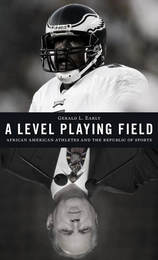
As Americans, we believe there ought to be a level playing field for everyone. Even if we don’t expect to finish first, we do expect a fair start. Only in sports have African Americans actually found that elusive level ground. But at the same time, black players offer an ironic perspective on the athlete-hero, for they represent a group historically held to be without social honor.
In his first new collection of sports essays since Tuxedo Junction (1989), the noted cultural critic Gerald Early investigates these contradictions as they play out in the sports world and in our deeper attitudes toward the athletes we glorify. Early addresses a half-century of heated cultural issues ranging from integration to the use of performance-enhancing drugs. Writing about Jackie Robinson and Curt Flood, he reconstructs pivotal moments in their lives and explains how the culture, politics, and economics of sport turned with them. Taking on the subtexts, racial and otherwise, of the controversy over remarks Rush Limbaugh made about quarterback Donovan McNabb, Early restores the political consequence to an event most commentators at the time approached with predictable bluster.
The essays in this book circle around two perennial questions: What other, invisible contests unfold when we watch a sporting event? What desires and anxieties are encoded in our worship of (or disdain for) high-performance athletes?
These essays are based on the Alain Locke lectures at Harvard University’s Du Bois Institute.
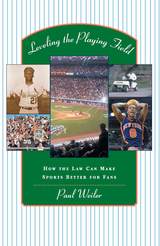
The world of sports seems entwined with lawsuits. This is so, Paul Weiler explains, because of two characteristics intrinsic to all competitive sports. First, sporting contests lose their drama if the competition becomes too lopsided. Second, the winning athletes and teams usually take the "lion's share" of both fan attention and spending. So interest in second-rate teams and in second-rate leagues rapidly wanes, leaving one dominant league with monopoly power.
The ideal of evenly balanced sporting contests is continually challenged by economic, social, and technological forces. Consequently, Weiler argues, the law is essential to level the playing field for players, owners, and ultimately fans and taxpayers. For example, he shows why players' use of performance-enhancing drugs, even legal ones, should be treated as a more serious offense than, say, use of cocaine. He also explains why proposals to break up dominant leagues and create new ones will not work, and thus why both union representation of players and legal protection for fans--and taxpayers--are necessary.
Using well-known incidents--and supplying little-known facts--Weiler analyzes a wide array of moral and economic issues that arise in all competitive sports. He tells us, for example, how Commissioner Bud Selig should respond to Pete Rose's quest for admission to the Hall of Fame; what kind of settlement will allow baseball players and owners to avoid a replay of their past labor battles; and how our political leaders should address the recent wave of taxpayer-built stadiums.
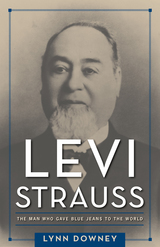
Blue jeans are globally beloved and quintessentially American. They symbolize everything from the Old West to the hippie counter-culture; everyone from car mechanics to high-fashion models wears jeans. And no name is more associated with blue jeans than Levi Strauss & Co., the creator of this classic American garment.
As a young man Levi Strauss left his home in Germany and immigrated to America. He made his way to San Francisco and by 1853 had started his company. Soon he was a leading businessman in a growing commercial city that was beginning to influence the rest of the nation. Family-centered and deeply rooted in his Jewish faith, Strauss was the hub of a wheel whose spokes reached into nearly every aspect of American culture: business, philanthropy, politics, immigration, transportation, education, and fashion.
But despite creating an American icon, Levi Strauss is a mystery. Little is known about the man, and the widely circulated "facts" about his life are steeped in mythology. In this first full-length biography, Lynn Downey sets the record straight about this brilliant businessman. Strauss's life was the classic American success story, filled with lessons about craft and integrity, leadership and innovation.

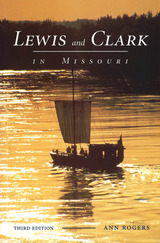
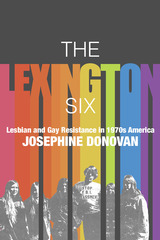
Drawing on transcripts of the judicial hearings, contemporaneous newspaper accounts, hundreds of pages of FBI files released to the author under the Freedom of Information Act, and interviews with many of the participants, Josephine Donovan reconstructs this fascinating, untold story. The Lexington Six is a vital addition to LGBTQ, feminist, and radical American history.
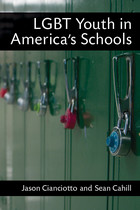
Jason Cianciotto and Sean Cahill, experts on lesbian, gay, bisexual, and transgender public policy advocacy, combine an accessible review of social science research with analyses of school practices and local, state, and federal laws that affect LGBT students. In addition, portraits of LGBT youth and their experiences with discrimination at school bring human faces to the issues the authors discuss.
This is an essential guide for teachers, school administrators, guidance counselors, and social workers interacting with students on a daily basis; school board members and officials determining school policy; nonprofit advocates and providers of social services to youth; and academic scholars, graduate students, and researchers training the next generation of school administrators and informing future policy and practice.

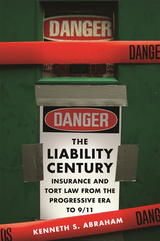
Kenneth Abraham explores the development and interdependency of the tort liability regime and the insurance system in the United States during the twentieth century and beyond, including the events of September 11, 2001.
From its beginning late in the nineteenth century, the availability of liability insurance led to the creation of new forms of liability, heavily influenced expansion of the liabilities that already existed, and continually promoted increases in the amount of money that was awarded in tort suits. A “liability-and-insurance spiral” emerged, in which the availability of liability insurance encouraged the imposition of more liability, and, in turn, the imposition of liability encouraged the further spread of insurance.
Liability insurance was not merely a source of funding for ever-greater amounts of tort liability. Liability insurers came to dominate tort litigation. They defended lawsuits against their policyholders, and they decided which cases to settle, fight, or appeal. The very idea behind insurance––that spreading losses among large numbers of policyholders is desirable––came to influence the ideology of tort law. To serve the aim of loss spreading, liability had to expand.
Today the tort liability and insurance systems constantly interact, and to reform one the role of the other must be fully understood.

Denise Von Glahn’s in-depth examination of Larsen merges traditional biography with a daring scholarly foray: an ethnography of one active artist. Drawing on musical analysis, the composer’s personal archive, and seven years of interviews with Larsen and those in her orbit, Von Glahn illuminates the polyphony of achievements that make up Larsen’s public and private lives. In considering Larsen’s musical impact, Von Glahn delves into how elements of the personal—a 1950s childhood, spiritual seeking, love of nature, and status as an “important woman artist”—inform her work. The result is a portrait of a musical pathfinder who continues to defy expectations and reject labels.
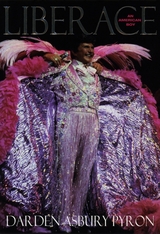
Liberace's career follows the trajectory of the classic American dream. Born in the Midwest to Polish-Italian immigrant parents, he was a child prodigy who, by the age of twenty, had performed with the Chicago Symphony Orchestra. Abandoning the concert stage for the lucrative and glittery world of nightclubs, celebrities, and television, Liberace became America's most popular entertainer. While wildly successful and good natured outwardly, Liberace, Pyron reveals, was a complicated man whose political, social, and religious conservativism existed side-by-side with a lifetime of secretive homosexuality. Even so, his swishy persona belied an inner life of ferocious aggression and ambition. Pyron relates this private man to his public persona and places this remarkable life in the rapidly changing cultural landscape of twentieth-century America.
Pyron presents Liberace's life as a metaphor, for both good and ill, of American culture, with its shopping malls and insatiable hunger for celebrity. In this fascinating biography, Pyron complicates and celebrates our image of the man for whom the streets were paved with gold lamé.
"An entertaining and rewarding biography of the pianist and entertainer whose fans' adoration was equaled only by his critics' loathing. . . . [Pyron] persuasively argues that Liberace, thoroughly and rigorously trained, was a genuine musician as well as a brilliant showman. . . . [A]n immensely entertaining story that should be fascinating and pleasurable to anyone with an interest in American popular culture."—Kirkus Reviews
"This is a wonderful book, what biography ought to be and so seldom is."—Kathryn Hughes, Daily Telegraph
"[A]bsorbing and insightful. . . . Pyron's interests are far-ranging and illuminating-from the influence of a Roman Catholic sensibility on Liberace and gay culture to the aesthetics of television and the social importance of self-improvement books in the 1950s. Finally, he achieves what many readers might consider impossible: a persuasive case for Liberace's life and times as the embodiment of an important cultural moment."—Publishers Weekly
"Liberace, coming on top of his amazing life of Margaret Mitchell, Southern Daughter, puts Darden Pyron in the very first rank of American biographers. His books are as exciting as the lives of his subjects."—Tom Wolfe
"Fascinating, thoughtful, exhaustive, and well-written, this book will serve as the standard biography of a complex icon of American popular culture."—Library Journal
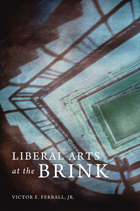
Liberal arts colleges represent a tiny portion of the higher education market—no more than 2 percent of enrollees. Yet they produce a stunningly large percentage of America’s leaders in virtually every field of endeavor. The educational experience they offer—small classes led by professors devoted to teaching and mentoring, in a community dedicated to learning—has been a uniquely American higher education ideal.
Liberal Arts at the Brink is a wake-up call for everyone who values liberal arts education. A former college president trained in law and economics, Ferrall shows how a spiraling demand for career-related education has pressured liberal arts colleges to become vocational, distorting their mission and core values. The relentless competition among them to attract the “best” students has driven down tuition revenues while driving up operating expenses to levels the colleges cannot cover. The weakest are being forced to sell out to vocational for-profit universities or close their doors. The handful of wealthy elite colleges risk becoming mere dispensers of employment and professional school credentials. The rest face the prospect of moving away from liberal arts and toward vocational education in order to survive.
Writing in a personable, witty style, Ferrall tackles the host of threats and challenges liberal arts colleges now confront. Despite these daunting realities, he makes a spirited case for the unique benefits of the education they offer—to students and the nation. He urges liberal arts colleges to stop going it alone and instead band together to promote their mission and ensure their future.
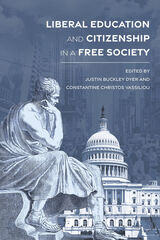
With Liberal Education and Citizenship in a Free Society, a collection of 19 original essays, editors Justin Dyer and Constantine Vassiliou present the work of a diverse group of scholars to assess the value of a liberal arts education in the face of market, technological, cultural, and political forces shaping higher learning today.
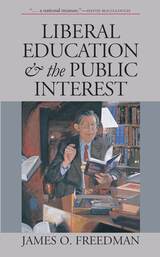
In 1996 James Freedman published Idealism and Liberal Education, which discussed the ideals that shaped his life as an intellectual, a law professor, and a college and university president. In this new collection of essays, he convincingly explores his firm belief that a liberal education is the “surest instrument yet devised for developing those civilizing qualities of mind and character that enable men and women to lead satisfying lives and to make significant contributions to a democratic society.”
Freedman concentrates directly upon the problems facing university presidents and all university administrators. A passionate and beautifully written argument for the benefits of a liberal education, this book
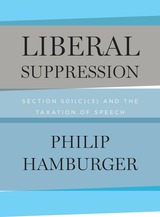
Tracing the history of American liberalism, including theological liberalism and its expression in nativism, Hamburger shows the centrality of turbulent popular anxieties about the Catholic Church and other potentially orthodox institutions. He argues persuasively that such theopolitical fears about the political speech of churches and related organizations underlay the adoption, in 1934 and 1954, of section 501(c)(3)’s speech limits. He thereby shows that the speech restrictions have been part of a broad majority assault on minority rights and that they are grossly unconstitutional.
Along the way, Hamburger explores the role of the Ku Klux Klan and other nativist organizations, the development of American theology, and the cultural foundations of liberal “democratic” political theory. He also traces important legal developments such as the specialization of speech rights and the use of law to homogenize beliefs. Ultimately, he examines a wide range of contemporary speech restrictions and the growing shallowness of public life in America.
His account is an unflinching look at the complex history of American liberalism and at the implications for speech, the diversity of belief, and the nation’s future.

Rogers Smith describes the adverse influence of modern liberalism's governing ideas on the development of American constitutional law and offers a new, more purposive theory to suit contemporary needs. He begins with a fresh analysis of the liberal goals shared by America's constitutional framers and points out the weaknesses of their political thought. Examining vital constitutional doctrines of due process, free speech, voting apportionment, and economic welfare, he demonstrates how contemporary law is often an incoherent patchwork of principles drawn from different historic versions of liberalism.
Smith considers and discards the major modern theories in political philosophy that bear on constitutional law: the democratic relativism of Alexander Bickel and John Hart Ely, the higher-law views inherited from America's religious traditions, and the neo-Kantian liberalism of Ronald Dworkin and John Rawls. Returning instead to the early liberalism of John Locke, he suggests how a theory centered on the Enlightenment commitment to promoting human capacities for reflective self-direction, or “rational liberty,” might better guide current constitutional debates.
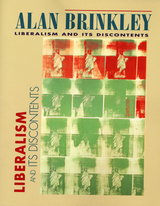
How did liberalism, the great political tradition that from the New Deal to the 1960s seemed to dominate American politics, fall from favor so far and so fast? In this history of liberalism since the 1930s, a distinguished historian offers an eloquent account of postwar liberalism, where it came from, where it has gone, and why. The book supplies a crucial chapter in the history of twentieth-century American politics as well as a valuable and clear perspective on the state of our nation's politics today.
Liberalism and Its Discontents moves from a penetrating interpretation of Franklin D. Roosevelt and the New Deal to an analysis of the profound and frequently corrosive economic, social, and cultural changes that have undermined the liberal tradition. The book moves beyond an examination of the internal weaknesses of liberalism and the broad social and economic forces it faced to consider the role of alternative political traditions in liberalism's downfall. What emerges is a picture of a dominant political tradition far less uniform and stable--and far more complex and contested--than has been argued. The author offers as well a masterly assessment of how some of the leading historians of the postwar era explained (or failed to explain) liberalism and other political ideologies in the last half-century. He also makes clear how historical interpretation was itself a reflection of liberal assumptions that began to collapse more quickly and completely than almost any scholar could have imagined a generation ago. As both political history and a critique of that history, Liberalism and Its Discontents, based on extraordinary essays written over the last decade, leads to a new understanding of the shaping of modern America.
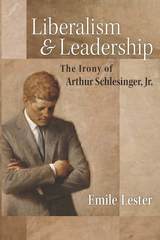
Most scholars and pundits today view Franklin Delano Roosevelt and John F. Kennedy as aggressive liberal leaders, while viewing Schlesinger’s famous histories of their presidencies as celebrations of their steadfast progressive leadership. A more careful reading of Schlesinger’s work demonstrates that he preferred an ironic political outlook emphasizing the virtues of restraint, patience, and discipline. For Schlesinger, Roosevelt and Kennedy were liberal heroes and models as much because they respected the constraints on their power and ideals as because they tested traditional institutions and redefined the boundaries of presidential power.
Aggressive liberalism involves the use of inspirational rhetoric and cunning political tactics to expand civil liberties and insure economic equality. Schlesinger’s emphasis on the crucial role that irony has played and should play in liberalism poses a challenge to the aggressive liberalism advocated by liberal activists, political thinkers, and pundits. That his counsel was grounded in conservative insights as well as liberal values makes it accessible to leaders across the political spectrum.
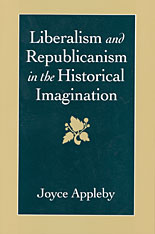
Like dye cast into water, liberal assumptions color everything American, from ideas about human nature to fears about big government. Not the dreaded “L” word of the 1988 presidential campaign, liberalism in its historical context emerged from the modern faith in free inquiry, natural rights, economic liberty, and democratic government. Expressed in the nation-building acts of revolution and constitution-writing, liberalism both structured and limited Americans’ sense of reality for two centuries.
The nation’s scholars were unable to break away from liberalism’s pervasive hold on the American mind until the last generation—when they recovered the lost world of classical republicanism. Ornate, aristocratic, prescriptive, and concerned with the common good, this form of republicanism held sway among the founding fathers before the triumph of liberal thought, with its simple, egalitarian, rational, and individualistic emphasis. The two concepts, as Joyce Appleby shows, posed choices for eighteenth-century thinkers much as they have divided twentieth-century scholars.
Entering one of the liveliest debates in the scholarly world about our ideological roots, Appleby follows the labyrinthine controversies that these two perspectives have generated in their day and in ours. In doing so, she addresses the tensions that remain to be resolved in the democratic societies of the late twentieth century—the complex relations between individual and community, personal liberty and the common good, aspiration and practical wisdom.

Normal0falsefalsefalseMicrosoftInternetExplorer4
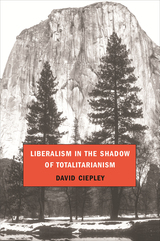
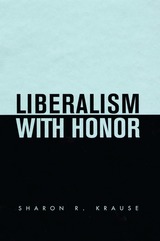
Why do men and women sometimes risk everything to defend their liberties? What motivates principled opposition to the abuse of power? In Liberalism with Honor, Sharon Krause explores honor as a motive for risky and difficult forms of political action. She shows the sense of honor to be an important source of such action and a spring of individual agency more generally.
Krause traces the genealogy of honor, including its ties to conscientious objection and civil disobedience, beginning in old-regime France and culminating in the American civil rights movement. She examines the dangers intrinsic to honor and the tensions between honor and modern democracy, but demonstrates that the sense of honor has supported political agency in the United States from the founders to democratic reformers such as Elizabeth Cady Stanton and Martin Luther King, Jr.
Honor continues to hold interest and importance today because it combines self-concern and personal ambition with principled higher purposes, and so challenges the disabling dichotomy between self-interest and self-sacrifice that currently pervades both political theory and American public life.
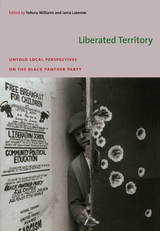
The histories and character of the party branches vary as widely as their locations. The Cape Verdeans of New Bedford, Massachusetts, were initially viewed as a particular challenge for the local Panthers but later became the mainstay of the Boston-area party. In the early 1970s, the Winston-Salem, North Carolina, chapter excelled at implementing the national Black Panther Party’s strategic shift from revolutionary confrontation to mainstream electoral politics. In Detroit, the Panthers were defined by a complex relationship between their above-ground activities and an underground wing dedicated to armed struggle. While the Milwaukee chapter was born out of a rising tide of black militancy, it ultimately proved more committed to promoting literacy and health care and redressing hunger than to violence. The Alabama Black Liberation Front did not have the official imprimatur of the national party, but it drew heavily on the Panthers’ ideas and organizing strategies, and its activism demonstrates the broad resonance of many of the concerns articulated by the national party: the need for jobs, for decent food and housing, for black self-determination, and for sustained opposition to police brutality against black people. Liberated Territory reveals how the Black Panther Party’s ideologies, goals, and strategies were taken up and adapted throughout the United States.
Contributors: Devin Fergus, Jama Lazerow, Ahmad A. Rahman, Robert W. Widell Jr., Yohuru Williams
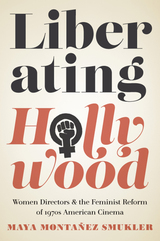
Liberating Hollywood examines the professional experiences and creative output of women filmmakers during a unique moment in history when the social justice movements that defined the 1960s and 1970s challenged the enduring culture of sexism and racism in the U.S. film industry. Throughout the 1970s feminist reform efforts resulted in a noticeable rise in the number of women directors, yet at the same time the institutionalized sexism of Hollywood continued to create obstacles to closing the gender gap. Maya Montañez Smukler reveals that during this era there were an estimated sixteen women making independent and studio films: Penny Allen, Karen Arthur, Anne Bancroft, Joan Darling, Lee Grant, Barbara Loden, Elaine May, Barbara Peeters, Joan Rivers, Stephanie Rothman, Beverly Sebastian, Joan Micklin Silver, Joan Tewkesbury, Jane Wagner, Nancy Walker, and Claudia Weill. Drawing on interviews conducted by the author, Liberating Hollywood is the first study of women directors within the intersection of second wave feminism, civil rights legislation, and Hollywood to investigate the remarkable careers of these filmmakers during one of the most mythologized periods in American film history.
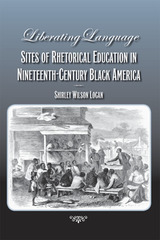
Liberating Language identifies experiences of nineteenth-century African Americans—categorized as sites of rhetorical education—that provided opportunities to develop effective communication and critical text-interpretation skills. Author Shirley Wilson Logan considers how nontraditional sites, which seldom involved formal training in rhetorical instruction, proved to be effective resources for African American advancement.
Logan traces the ways that African Americans learned lessons in rhetoric through language-based activities associated with black survival in nineteenth-century America, such as working in political organizations, reading and publishing newspapers, maintaining diaries, and participating in literary societies. According to Logan, rhetorical training was manifested through places of worship and military camps, self-education in oratory and elocution, literary societies, and the black press. She draws on the experiences of various black rhetors of the era, such as
Frederick Douglass, Frances Harper, Fanny Coppin, Charles Chesnutt, Ida B. Wells, and the lesser-known Oberlin-educated Mary Virginia Montgomery, Virginia slave preacher "Uncle Jack," and former slave "Mrs. Lee."
Liberating Language addresses free-floating literacy, a term coined by scholar and writer Ralph Ellison, which captures the many settings where literacy and rhetorical skills were acquired and developed, including slave missions, religious gatherings, war camps, and even cigar factories. In Civil War camp- sites, for instance, black soldiers learned to read and write, corresponded with the editors of black newspapers, edited their own camp-based papers, and formed literary associations.
Liberating Language outlines nontraditional means of acquiring rhetorical skills and demonstrates how African Americans, faced with the lingering consequences of enslavement and continuing oppression, acquired rhetorical competence during the late eighteenth century and throughout the nineteenth century.
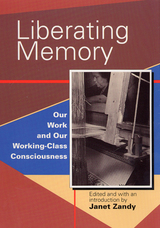
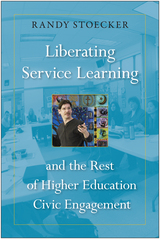
Randy Stoecker has been “practicing” forms of community-engaged scholarship, including service learning, for thirty years now, and he readily admits, “Practice does not make perfect.” In his highly personal critique, Liberating Service Learning and the Rest of Higher Education Civic Engagement, the author worries about the contradictions, unrealized potential, and unrecognized urgency of the causes as well as the risks and rewards of this work.
Here, Stoecker questions the prioritization and theoretical/philosophical underpinnings of the core concepts of service learning: 1. learning, 2. service, 3. community, and 4. change. By “liberating” service learning, he suggests reversing the prioritization of the concepts, starting with change, then community, then service, and then learning. In doing so, he clarifies the benefits and purpose of this work, arguing that it will create greater pedagogical and community impact.
Liberating Service Learning and the Rest of Higher Education Civic Engagement challenges—and hopefully will change—our thinking about higher education community engagement.

The powerful novelist here turns penetrating critic, giving us—in lively style—both trenchant literary analysis and fresh insight on the art of writing.
“When African American writers began to trust the literary possibilities of their own verbal and musical creations,” writes Gayl Jones, they began to transform the European and European American models, and to gain greater artistic sovereignty.” The vitality of African American literature derives from its incorporation of traditional oral forms: folktales, riddles, idiom, jazz rhythms, spirituals, and blues. Jones traces the development of this literature as African American writers, celebrating their oral heritage, developed distinctive literary forms.
The twentieth century saw a new confidence and deliberateness in African American work: the move from surface use of dialect to articulation of a genuine black voice; the move from blacks portrayed for a white audience to characterization relieved of the need to justify. Innovative writing—such as Charles Waddell Chesnutt’s depiction of black folk culture, Langston Hughes’s poetic use of blues, and Amiri Baraka’s recreation of the short story as a jazz piece—redefined Western literary tradition.
For Jones, literary technique is never far removed from its social and political implications. She documents how literary form is inherently and intensely national, and shows how the European monopoly on acceptable forms for literary art stifled American writers both black and white. Jones is especially eloquent in describing the dilemma of the African American writers: to write from their roots yet retain a universal voice; to merge the power and fluidity of oral tradition with the structure needed for written presentation. With this work Gayl Jones has added a new dimension to African American literary history.
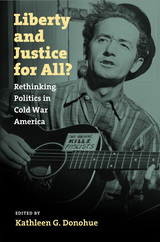
In addition to volume editor Kathleen G. Donohue, contributors include Howard Brick, Kari Frederickson, Andrea Friedman, David Greenberg, Grace Elizabeth Hale, Jennifer Klein, Laura McEnaney, Kevin M. Schultz, Jason Scott Smith, Landon R. Y. Storrs, and Jessica Weiss.

Surveying a crucial period in the formation of the modern state and society, Paulson examines the prevailing conflicts of the time and the limitations of various attempts to institute reform, radical change, or ritualistic renewal of American society. His reading of existing scholarship highlights contested social constructs, clashing priorities, changing meanings of key terms, and shifting institutional dynamics in light of their contributions to a complex tragedy in which all parties fell short of the demands for democratic mutuality. Along with discussions of the movements and manipulations of presidential, congressional, and judicial politics, he integrates the experiences of diverse populations—including African Americans, women, Asian immigrants, Native Americans, and working people—and offers a new interpretation of the ways in which social change and political events interact to reframe the many possibilities of American society.
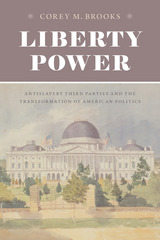
As Corey M. Brooks explains, abolitionist trailblazers who organized first the Liberty Party and later the more moderate Free Soil Party confronted formidable opposition from a two-party system expressly constructed to suppress disputes over slavery. Identifying the Whigs and Democrats as the mainstays of the southern Slave Power’s national supremacy, savvy abolitionists insisted that only a party independent of slaveholder influence could wrest the federal government from its grip. A series of shrewd electoral, lobbying, and legislative tactics enabled these antislavery third parties to wield influence far beyond their numbers. In the process, these parties transformed the national political debate and laid the groundwork for the success of the Republican Party and the end of American slavery.
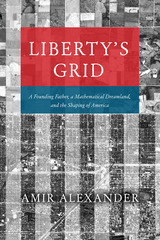
Seen from an airplane, much of the United States appears to be a gridded land of startling uniformity. Perpendicular streets and rectangular fields, all precisely measured and perfectly aligned, turn both urban and rural America into a checkerboard landscape that stretches from horizon to horizon. In evidence throughout the country, but especially the West, the pattern is a hallmark of American life. One might consider it an administrative convenience—an easy way to divide land and lay down streets—but it is not. The colossal grid carved into the North American continent, argues historian and writer Amir Alexander, is a plan redolent with philosophical and political meaning.
In 1784 Thomas Jefferson presented Congress with an audacious scheme to reshape the territory of the young United States. All western lands, he proposed, would be inscribed with a single rectilinear grid, transforming the natural landscape into a mathematical one. Following Isaac Newton and John Locke, he viewed mathematical space as a blank slate on which anything is possible and where new Americans, acting freely, could find liberty. And if the real America, with its diverse landscapes and rich human history, did not match his vision, then it must be made to match it.
From the halls of Congress to the open prairies, and from the fight against George III to the Trail of Tears, Liberty’s Grid tells the story of the battle between grid makers and their opponents. When Congress endorsed Jefferson’s plan, it set off a struggle over American space that has not subsided. Transcendentalists, urban reformers, and conservationists saw the grid not as a place of possibility but as an artificial imposition that crushed the human spirit. Today, the ideas Jefferson associated with the grid still echo through political rhetoric about the country’s founding, and competing visions for the nation are visible from Manhattan avenues and Kansan pastures to Yosemite’s cliffs and suburbia’s cul-de-sacs. An engrossing read, Liberty’s Grid offers a powerful look at the ideological conflict written on the landscape.









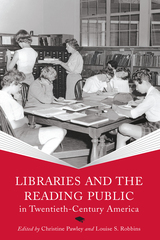
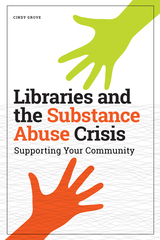
The opioid epidemic, and other behavioral health issues such as alcohol and drug abuse, directly impact every community across the nation; and, by extension, public libraries’ daily work. Because libraries are not only trusted guardians of information but also vital community centers, people struggling with addictive behaviors as well as their family members and friends often turn to the library for help. But many library workers feel overwhelmed, finding themselves unprepared for serving these patrons in an effective and empathetic way. This book encourages readers to turn their fears and uncertainty into strengths and empowerment, offering to-the-point guidance on welcoming people with substance use disorders and their loved ones through policy, materials, outreach, collaboration, programs, and services. Written by a frontline librarian whose personal experiences inform the book, this resource
- explores the library’s role in the fight against addiction and how to become part of the solution by combating stigma;
- provides background on understanding how substance abuse and related behaviors affect different age groups and populations;
- explains how to be proactive regarding library safety and security by carefully crafting library policies and effectively communicating them to staff;
- offers real world guidance on training library staff, including pointers on recognizing observable signs of drug abuse and responding appropriately and safely to uncomfortable or potentially dangerous situations;
- discusses safeguards such as a needle disposal unit, defibrillator, and Naloxone;
- gives tips on marketing, outreach, and programming, from putting together displays of materials and resources to partnering with local organizations; and
- recommends useful websites, documentaries, and additional resources for further learning.


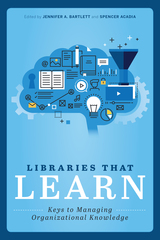




Library liaisons often have primary jobs that do not involve collection development, but their familiarity with collection practices makes all the difference in faculty relations. And time pressures mean that on-boarding needs to be as streamlined as possible. This concise, field-tested training manual will put your liaison on solid footing. Plus, end of the chapter prompts make it easy to tailor your approach to local practices. With the help of this resource, your new liaison will get up to speed on such topics as
- tracking budget balances in assigned departments;
- differentiating between the needs of an individual faculty member and their department;
- how to say no to monograph requests;
- benchmarking titles with peer institutions or coordinating within a consortium;
- 17 questions to ask when evaluating a database;
- considerations when making weeding decisions;
- four key conversations to have annually between liaisons and collection development librarians; and
- gathering data for program accreditation reports.

Just because a set of responsibilities isn’t formally called management doesn’t mean that it isn’t management. And this vital text speaks to a reality that all current professionals already know: that is, everyone studying to enter the profession needs an introduction to the topic of management. Because no matter what one’s role in an academic or public library context, it will involve decision-making, planning, and organization skills. Newly revised and updated, this book pulls together management best practices from library management experts teaching in LIS programs across the U.S. and Canada. Among the many topics discussed are
- classic and contemporary theories of management, and how they apply to the library;
- human resource planning;
- marketing and public relations;
- negotiations, mediation, and financial management of the library;
- facilities management;
- information technology management and future trends;
- change management, organizational culture; and
- ethics and confidentiality.


Effectively marketing libraries by persuasively communicating their relevance is key to ensuring their future. Speaking directly to those in senior leadership positions, Anderson lays out the structural and organizational changes needed to help libraries answer the relevance question and maximize their marketing and communications efforts. Focusing on big-picture strategies, she shares lessons learned from her 20+ year career in library marketing and communications. No matter what type or size of library you help to lead, by reading this book you will
- gain insight into why libraries need to tell their stories more effectively than they are today;
- be able to craft a strategic roadmap for marketing your library and communicating its value in a variety of ways that resonate with key audiences;
- see why improvements to the structure of your marketing and communications team can lead to better results;
- learn practical methods for incorporating audience research into your planning;
- know how to remove customer barriers and discontinue practices that are thwarting your marketing efforts;
- receive guidance on preparing for potential crises;
- understand how to be more community-focused by forming and sustaining partnerships; and
- feel confident in engaging with stakeholders so that they become your library’s best ambassadors.

After a career of more than 40 years, Murray-Rust, former Dean of Libraries at Georgia Tech and a self-proclaimed library disrupter, sees our profession’s central challenge as simply this: how to turn the library outward in order to make a difference in the lives of individuals and the community. In this book she encourages readers to look an uncertain library future square in the eye. She shares stories from her transformational years at Georgia Tech Libraries which present both inspiration and practical advice on how to stand up for values while changing the ways we act upon them. Organized around seven action steps for change, this book offers takeaways and activities you can adapt to your work style and organizational culture. You will learn from such stories and lessons as
- the three different kinds of information you need for measuring impact;
- using new frameworks, outside fragmented, risk-adverse library structures, to get the work done;
- the limitations of trying to manage your way through major cultural change;
- embedding in the community to develop visions and strategies for improvement;
- painful and challenging times that set Murray-Rust on a path of self-learning;
- how an uncomfortable assignment led to a sought-after seat at the table for a university-wide capital construction project;
- the bold promise that got the library onto the high-priority list for renovation;
- visiting a Toyota plant to learn how to encourage employee engagement and creativity; and
- learning to listen with the "turning outward" philosophy of Harwood Institute.


READERS
Browse our collection.
PUBLISHERS
See BiblioVault's publisher services.
STUDENT SERVICES
Files for college accessibility offices.
UChicago Accessibility Resources
home | accessibility | search | about | contact us
BiblioVault ® 2001 - 2024
The University of Chicago Press






